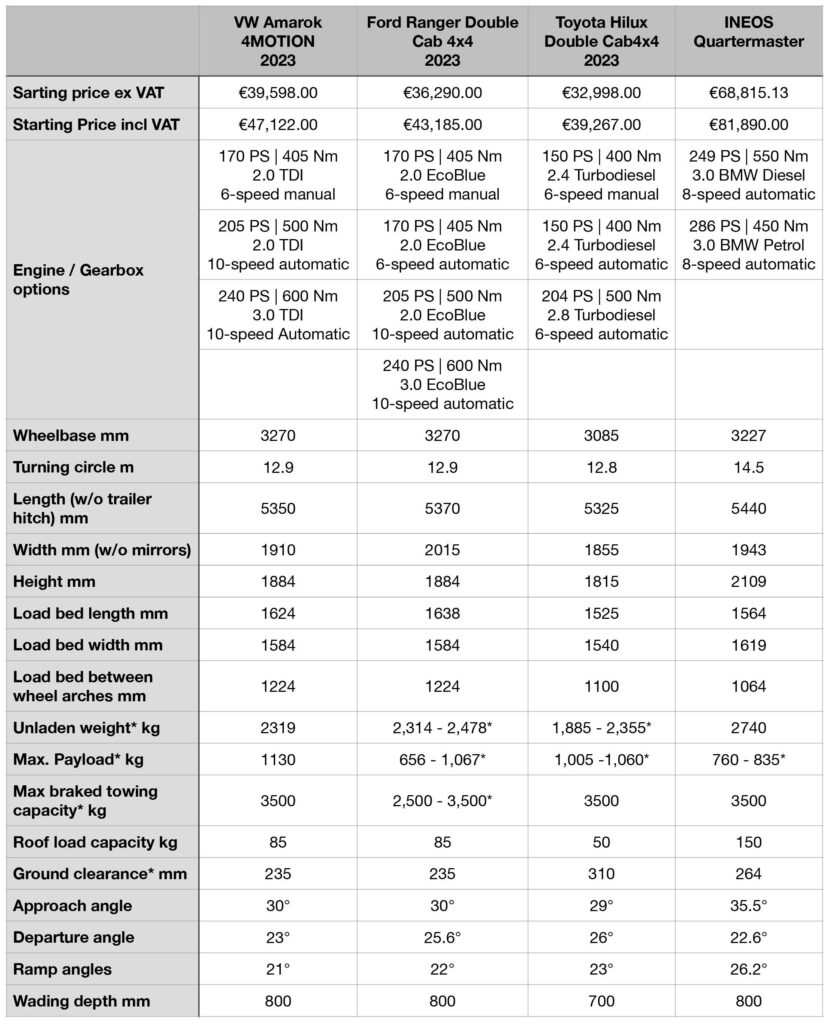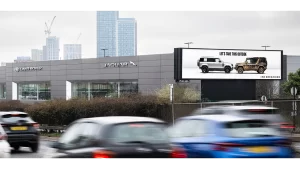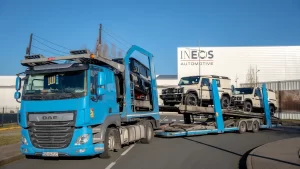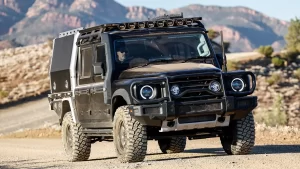INEOS used this year’s Goodwood Festival of Speed to present their latest model: the Quartermaster. Typical for INEOS, the build-up and celebratory introduction of the Quartermaster had everyone holding their breath, but how does this brand new pickup fare against its rivals?
For a new vehicle manufacturer to keep their spot in the limelight, they must remain in the headlines—and what better way to do so, than launch a third model alongside the existing passenger and commercial bodied Grenadier.
INEOS have had their share of headlines across social media as frustrated customers waited for their cars which were at the dealers’…but not ready for delivery. To be fair, INEOS is the youngest brand in the automobile business and the Grenadier is a new product in every sense. Even mature manufacturers anticipate a few teething problems with the initial production run, not to mention the necessity of coping with the backlash of COVID and a war.
PEDIGREE
Considering the platform the Quartermaster is built upon, this new pickup holds plenty of promise and certainly draws a lot of attention. After all, the Grenadier is mechanically and structurally designed to carry its passengers through the most challenging terrain. The BMW engines, ZF gearbox and incredibly tough Carraro axles are a sure recipe for durability and reliability.
The boxy shape is reminiscent of traditional 4x4s, and INEOS have succeeded in bringing a built-for-purpose off-roader to market at a price which reflects the brands and quality of the components used to build it.
So how does all of this translate into a pickup?
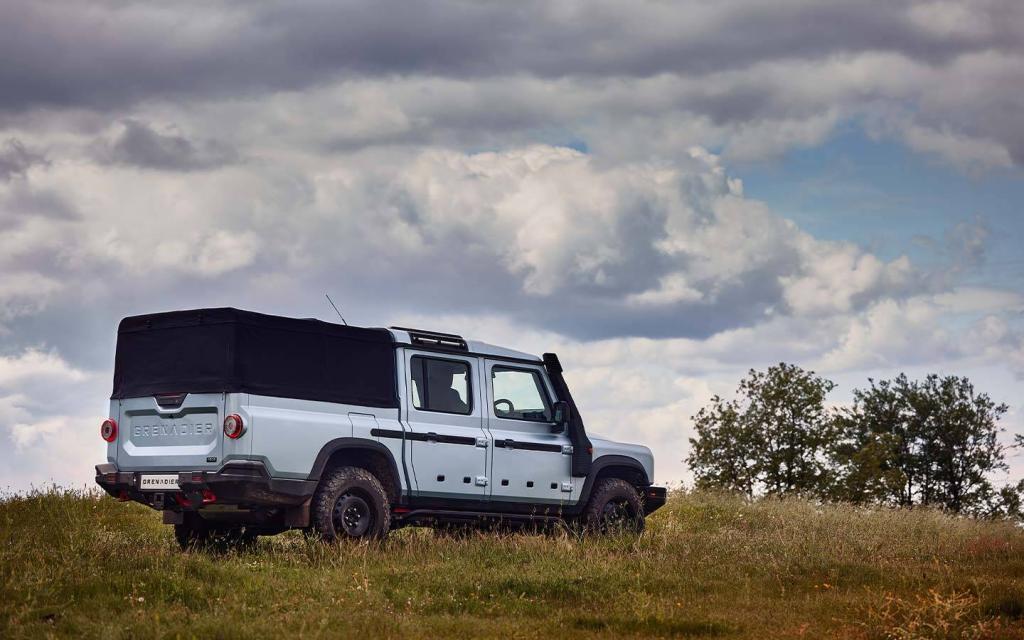
EXPECTATIONS
Whereas the Grenadier set out to fill a unique gap in the market vacated by the old Defender, the Quartermaster could be construed as a replacement for the Defender 130. However, there are already a number of pickups on the market contending for commercial and consumer-oriented clients.
If you need a pickup that can cope with rugged terrain, then using the Grenadier as a base is an excellent starting point. Features such as its ladder frame, rigid axles, powerful drivetrain, permanent four-wheel drive and the options of diff locks, a winch and other useful accessories are indisputable merits. However, for construction companies, landscape gardeners and everyone else that needs a basic 4×4 pickup, cost and practicality rank high on the wish list.
Should you need to convert the vehicle by removing the bed and replacing it with a bespoke body (such as a firetruck or even for overlanding), payload and space are significant features for consideration.
As far as Europe is concerned, there are a number of alternatives contending for market share including the Ford Ranger, Toyota Hilux and VW Amarok.
PRACTICALITY
To keep the playing field as level as possible, this article only looks at double cabs. Unlike other manufacturers, Grenadier doesn’t offer a single or extra cab with the benefit of an extended bed. A chassis cab option will be available at a later date.
Using the footprint of a euro pallet (1,200 x 800 mm) as a minimum requirement, the longest load area goes to the Ford Ranger at 1,638 mm with 1,224 mm between the wheel arches, compared to 1,564 and 1,064 mm respectively for the Quartermaster.
The battle for maximum payload goes to the Amarok which can carry 1,130 kg compared to the Quartermaster’s underwhelming 760 or 825 kg, depending on the choice of engine.
Overall dimensions and turning circle play a role if the vehicle will be used regularly in an urban environment. At 5.44 metres, the Quartermaster is 115 mm longer than the Toyota Hilux. As far as the turning circle is concerned, INEOS measures a whopping 14.5 m compared to 12.8 m of the Toyota or 12.9 m of the Ford and VW.
As for towing, all of the contenders can pull up to 3,500 kg. (The Ford Ranger is limited to 2,500 kg for some configurations.)
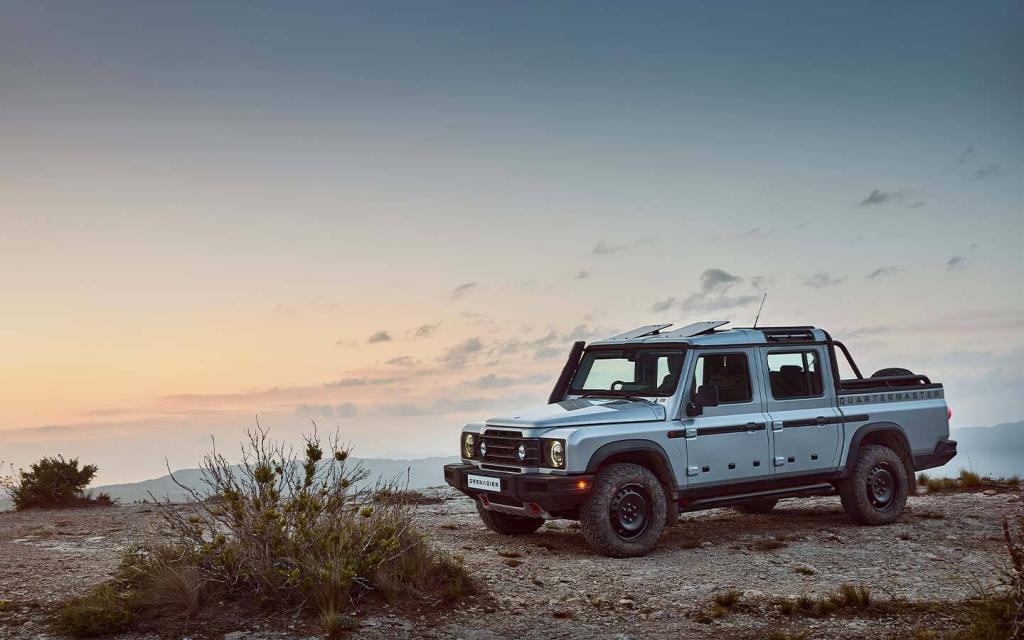
OFFROAD SPECS
Best ground clearance goes to the Toyota Hilux with 310 mm compared to the Quartermaster’s 265 mm. The Quartermaster’s approach and ramp angles (35.5° and 26.2°) lead the field but the departure angle (22.6°) falls behind.
Wading depth at 800 mm is equal to the Amarok and Ranger, with the Toyota lagging slightly behind at just 700 mm.
PRICE
Starting prices for the Amarok, Ranger and Hilux fall into a bracket ranging from €40,000 to €47,000 including 19% VAT. The Grenadier begins at €81,890, also including VAT. For UK customers, the poor payload means that they will be unable to reclaim the VAT, thus making it considerably more expensive than its rivals whose net prices start at €33,000 for the Toyota Hilux and peak at just shy of €40,000 for the Amarok.
CONCLUSION
At the time of writing, INEOS haven’t yet made test vehicles available to the press, so this first critical look at the Quartermaster is based upon facts, figures and comparative spreadsheets.
Fundamentally, I like the concept of the INEOS Grenadier. As a true 4×4 with focus on functionality and performance beyond the pavement, it does indeed fulfil market requirements. As far as overlanding is concerned, the boxy shape, interior space, roof load capacity, and its ability to go just about anywhere make it enormously attractive.
The Quartermaster, on the other hand, falls into the competitive pickup bracket and faces some stiff competition. Unfortunately, when compared on paper to its rivals, there are a number of shortcomings, such as payload and costs, which potential customers may find difficult to swallow.
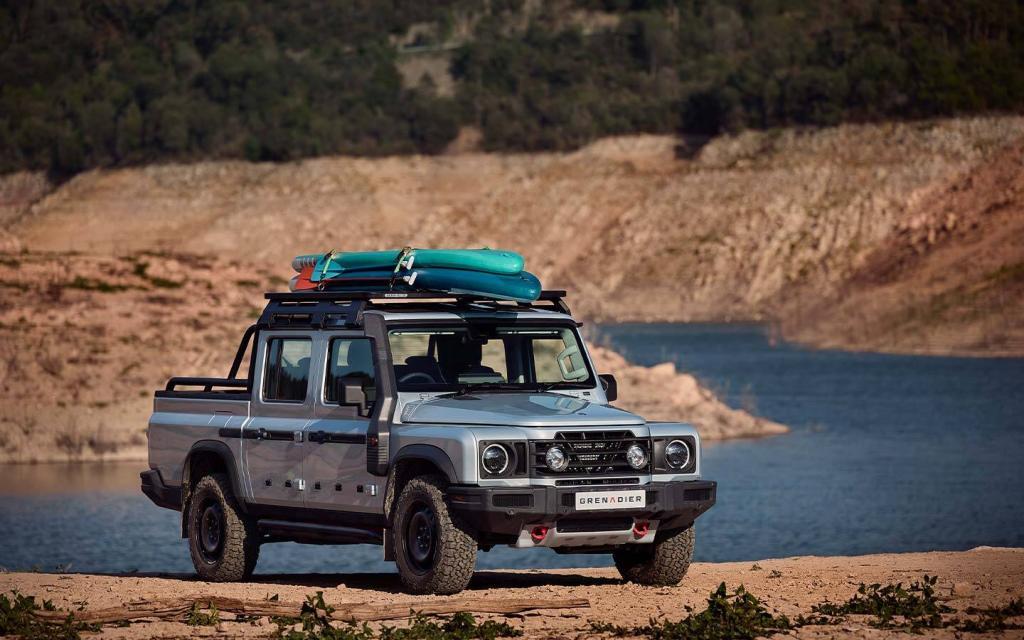
As with any vehicle, there will be a market for the Quartermaster, but I don’t believe it will match the sales numbers of its sibling, the Grenadier, or significantly dent the market share of its competitors. Having said that, the Quartermaster stands a good chance of winning plus points in the lifestyle truck category.
